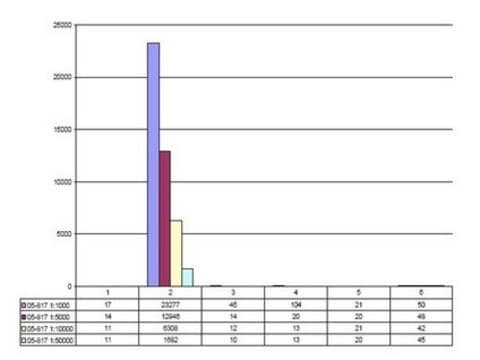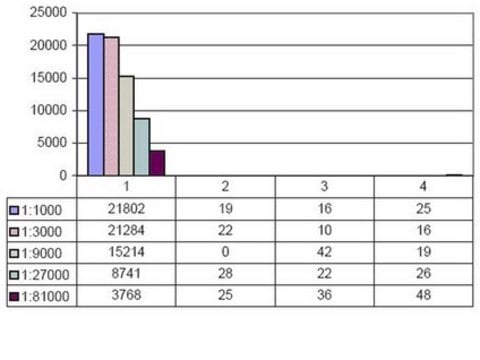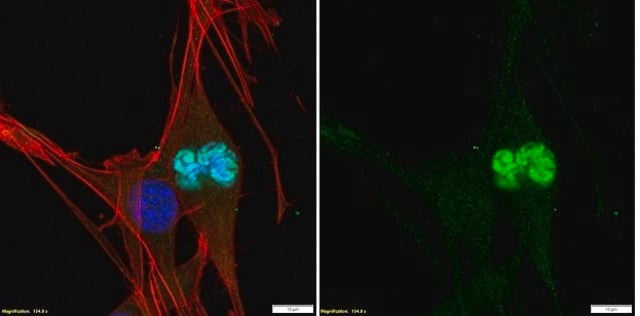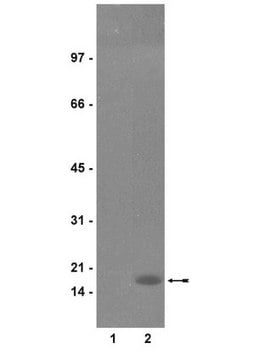ZRB1226
Anti-phospho Histone H3 S10 Antibody, clone 63-1C-8 , ZooMAb® Rabbit Monoclonal

recombinant, expressed in HEK 293 cells
Synonym(e):
H3/g, H3t, Histone H3/t
About This Item
Empfohlene Produkte
Biologische Quelle
rabbit (recombinant)
Qualitätsniveau
Rekombinant
expressed in HEK 293 cells
Konjugat
unconjugated
Antikörperform
purified antibody
Antikörper-Produkttyp
primary antibodies
Klon
63-1C-8, recombinant monoclonal
Produktlinie
ZooMAb® learn more
Form
lyophilized
Mol-Gew.
calculated mol wt 15.51 kDa
observed mol wt ~17 kDa
Speziesreaktivität
mouse, human
Verpackung
antibody small pack of 25 μL
Grünere Alternativprodukt-Eigenschaften
Waste Prevention
Designing Safer Chemicals
Design for Energy Efficiency
Learn more about the Principles of Green Chemistry.
Erweiterte Validierung
recombinant expression
Learn more about Antibody Enhanced Validation
sustainability
Greener Alternative Product
Methode(n)
dot blot: suitable
flow cytometry: suitable
immunocytochemistry: suitable
inhibition assay: suitable (peptide)
western blot: suitable
Isotyp
IgG
UniProt-Hinterlegungsnummer
Grünere Alternativprodukt-Kategorie
, Aligned
Versandbedingung
ambient
Lagertemp.
2-8°C
Posttranslationale Modifikation Target
phosphorylation (pSer10)
Angaben zum Gen
human ... H3C1(8350)
mouse ... H3C1(360198)
Allgemeine Beschreibung
Each ZooMAb antibody is manufactured using our proprietary recombinant expression system, purified to homogeneity, and precisely dispensed to produce robust and highly reproducible lot-to-lot consistency. Only top-performing clones are released for use by researchers. Each antibody is validated for high specificity and affinity across multiple applications, including its most commonly used application. ZooMAb antibodies are reliably available and ready to ship when you need them.
Learn more about ZooMAb here.
Spezifität
Immunogen
Anwendung
Immunocytochemistry Analysis: A 1:100 dilution from a representative lot detected phospho-Histone H3 (Ser10) in HeLa, A431, HUVEC, and NIH 3T3 cells.
Dot Blot Analysis: Representative lot was tested on AbSurance Histone Peptide Microarray.
Peptide Inhibition Assay Analysis: 1:100 dilution from a representative lot did not detect the target band in acid extract from HeLa cells treated with colemid (50 ng/ml) when preblocked with the S10 phosphopeptide, but detected the band when the corresponding non-phosphopeptide was used.
Note: Actual optimal working dilutions must be determined by the end user as specimens and experimental conditions may vary.
Zielbeschreibung
Physikalische Form
Rekonstituierung
Lagerung und Haltbarkeit
Rechtliche Hinweise
Haftungsausschluss
Not finding the right product?
Try our Produkt-Auswahlhilfe.
Lagerklassenschlüssel
11 - Combustible Solids
WGK
WGK 2
Flammpunkt (°F)
Not applicable
Flammpunkt (°C)
Not applicable
Analysenzertifikate (COA)
Suchen Sie nach Analysenzertifikate (COA), indem Sie die Lot-/Chargennummer des Produkts eingeben. Lot- und Chargennummern sind auf dem Produktetikett hinter den Wörtern ‘Lot’ oder ‘Batch’ (Lot oder Charge) zu finden.
Besitzen Sie dieses Produkt bereits?
In der Dokumentenbibliothek finden Sie die Dokumentation zu den Produkten, die Sie kürzlich erworben haben.
Protokolle
Follow this short antibody reconstitution protocol and see how easy it is to reconstitute ZooMAb® recombinant antibodies.
Verwandter Inhalt
Entscheiden Sie sich für rekombinante ZooMAb®-Antikörper, eine umweltverträglichere Produktalternative, die Ihnen nachhaltige Optionen für Ihre Forschung eröffnet. Diese BSA- und Trägerprotein-freien Antikörper werden abfallarm verpackt und bieten höchste Stabilität ohne Leistungseinbußen.
Greener ZooMAb® antibodies offer sustainable options with low-waste packaging and BSA-free formulation.
Discover cancer research resources with modeling and profiling tools for cell culture, genomics, biomarkers, and more to help maximize your cancer research.
Unser Team von Wissenschaftlern verfügt über Erfahrung in allen Forschungsbereichen einschließlich Life Science, Materialwissenschaften, chemischer Synthese, Chromatographie, Analytik und vielen mehr..
Setzen Sie sich mit dem technischen Dienst in Verbindung.








